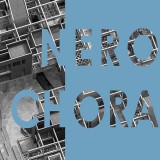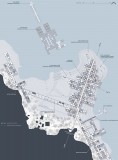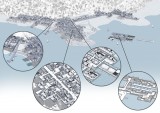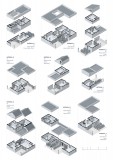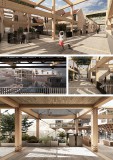Supervisor:
2023
"Nerochora" is a project referring to the re search and formulation of a possible alternative scenario for the village of Mesochora, Trikala, which is threatened with partialpartial, or even complete complete, extinction due to the filling of the reservoir of the homonymous dam in the area.
This rockfill dam of pharaonic proportions, almost has been abandoned since 2001 in the heart of Mount South Pindos awaiting its blockage, which is still unknown if or when it will actually take place. It is part of a planned complex of similar mega structure interventions in the Acheloos River River, aiming at both producing hydroelectric power and partially diverting the river to meet the irrigation needs of agriculture in Thessaly. It remains the subject of intense controversy between residents of the wider region of Mesochora, environmental organizations, the state and the rural population of the lowland plainplains which holds its breath for access to more water. At the same time, it is an open wound in the natural landscape with a huge ecological impact impact. The future manman-made lake is also flooding this historic village of the area, whose inhabitants were given no more than a mix of expropriations, vague relocation theo riesries, general uprooting and possible future compensationcompensations that have been following the initial promises of the village remain remaining intact.
This paper attempts to approach the difficult equation of a possible coexistence of the village with the dam project, through redefining life in the new conditions of an emerging waterworld waterworld. Leveraging the main idea of vast pre pre-cast concrete pile grids in existing soil retaining studies, it examines the possibility of raising a part of the settlement with a simul taneous small and controlled limitation of the maximum water level. At the same time, it reshapes the "dead" zone being created by the wide range of water level fluctuation, through supportive passable land formations that creatcreate piers, lakeside walks and seasonal uses. It transforms the planned deforestation of hundreds of acres into the basic materiality of a porous wood space grid that will accommodate a new habitat and a de facto new relationship with the surrounding water. It adapts part of the planned house demolitions, into masonry memory traces of the pre pre-existing space space, which act as a bas is of ephemeral summer life. It provides for new productive activities such as aquaculture and tourism, with the aim of reactivating a decaying countryside regionregion. Above all, however, it aspires to be a potential trigger of a new round of public consultation and radical re -examination of the established practices in similar case scenarios of public interest.
